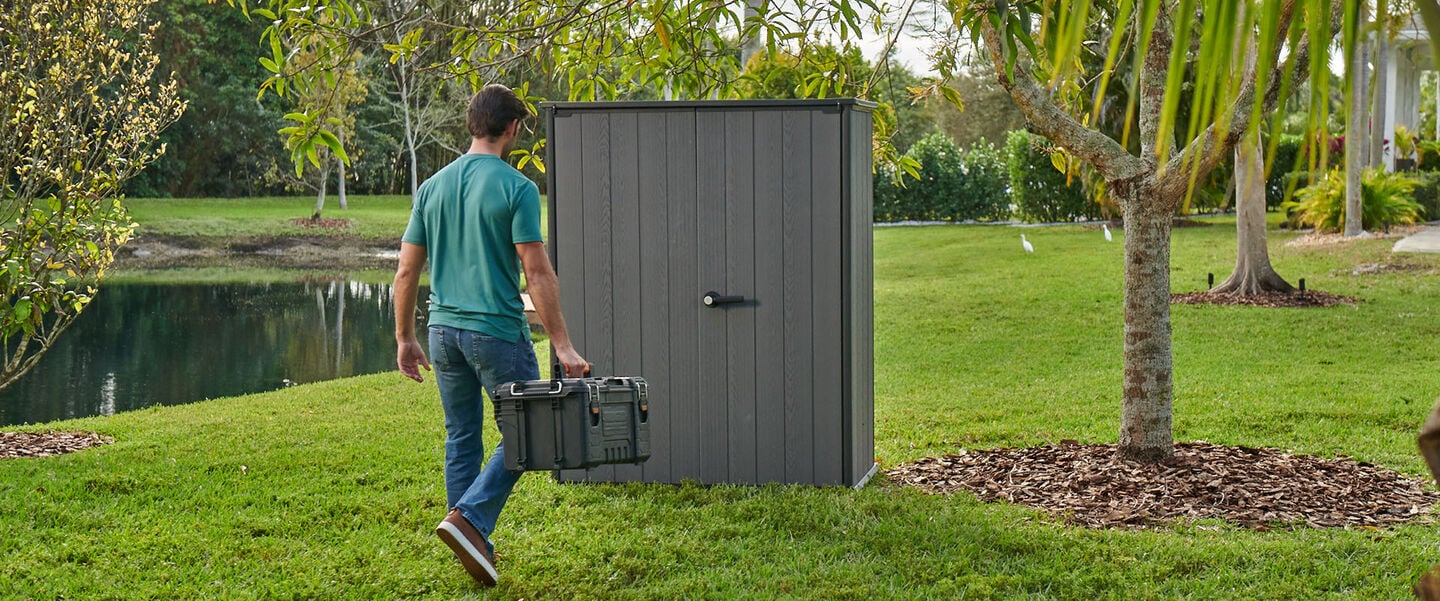
How to Get Rid of Mold in an Outdoor Shed
Have you ever opened your outdoor shed only to be hit with that musty, unpleasant smell of mold?
It's not just about the odor; mold in sheds can damage your belongings and pose health risks, too. But fear not! This guide will tackle the pesky mold problem in outdoor sheds head-on. From understanding why it happens to practical steps you can take to eliminate it, we've got you covered. So, grab your gloves, mask, and goggles--and let's dive into the world of shed mold removal.
Understanding Mold in Sheds
Understanding mold in sheds starts with knowing the enemy. Ever wondered what those fuzzy patches in your shed are? Well, there could be various types of mold! These little troublemakers thrive in damp, dark environments—perfect conditions often found in sheds. Moisture from leaks or poor ventilation, combined with organic matter like wood or cardboard, creates a cozy home for mold to flourish.
But mold exposure is not just about the ick factor; it can lead to health issues like allergies, respiratory problems, and even infections. So, it's essential to tackle mold in sheds before it becomes a bigger problem for your belongings and your well-being.
Inspection and Assessment
If you suspect mold in your shed, consider getting gloves, goggles, and an N95 mask for protection. Once you’re protected, you’ll want to clean out that shed! Pull everything out so you can see what you're dealing with.
Now, it's time to put on your detective hat and get inspecting. Take a good look around every nook and cranny of the shed. Check the walls, ceilings, corners, and even underneath any shelving or storage units. Look out for any signs of mold growth—those fuzzy patches or discolored spots are dead giveaways. As you're snooping around, keep an eye out for areas where mold loves to hang out, like spots prone to leaks or areas with poor ventilation. Once you've played detective and found all the mold hideouts, it's time to assess the situation. Take note of how widespread the mold is and how severe the infestation seems. This will help you plan your attack strategy for kicking that mold to the curb!
Preparation for Mold Removal
Now that you've scoped out the moldy situation in your shed, it's time to gear up for battle if you haven’t already and remediate the mold yourself. It’s always recommended to seek help from professionals first, but if you want to do it yourself, you’ll need a few things. Safety first! Mold removal can stir up some nasty stuff, so make sure you've got proper ventilation in your shed. Throw open those windows, set up fans to get the air moving, and consider wearing an N95 mask (like we talked about above) to protect your lungs from inhaling any mold spores. Oh, and don't forget your gloves! Moldy stuff is gross, and you definitely don't want to be touching it with your bare hands.
How to Remove Mold from a Shed
Alright, it's time to roll up our sleeves and kick that mold to the curb! When it comes to cleaning up the mold, The EPA recommends that you “Scrub mold off hard surfaces with detergent and water, and dry completely.”
If you prefer something a little stronger, Family Handyman recommends that you “Scrub the surface mold stains from walls and wood trim with a mixture of one-quart water and 1/2-cup bleach mold cleaner to kill the mold.” You’ll want to use a soft brush to scrub away the mold and then let the bleach work its magic by sitting for a while. Then, after a while, you’ll want to wipe the surface but make sure you don’t rinse it.
As an important reminder:
You should never mix bleach with substances like vinegar, ammonia, or other chemicals, as this is toxic. Always, always, always follow the manufacturer's instructions when using cleaning agents and chemicals to tackle mold. Mixing the wrong chemicals or using them incorrectly can be downright dangerous, so read the label and follow the directions to a T. Your health and safety are worth it!
Also, before you start celebrating, be sure to check items in your shed for mold–especially those that were close to where the mold was found. You might need to clean or even toss items in your shed that have mold on them, or you’ll end up with the same issue again. Speaking of which, there are preventative measures you can take to make it less likely the mold will return.
How to Prevent Mold in an Outdoor Shed
Now that you've battled the mold and come out victorious, you’re probably wondering how to prevent mold in an outdoor shed. First things first, let's address any underlying moisture issues in your shed. You’ll want to check for leaks in the roof or walls and ensure your shed has proper drainage to prevent water from pooling around the foundation. Fixing these issues will help keep your shed nice and dry, making it much less inviting for mold to move in.
Next, let's discuss ventilation. Good airflow is key to keeping mold at bay, so consider adding vents or fans to your shed to improve circulation. This will help prevent moisture from getting trapped inside, reducing the chances of mold growth. Plus, it'll keep your shed fresh and airy, which is always a bonus!
Now, onto everyone's favorite chore—cleaning. Regular cleaning and maintenance are essential for keeping mold from reoccurring in your shed. Make it a habit to give your shed a once-over every few months, wiping down surfaces and checking for any signs of mold or mildew. And don't forget to keep your belongings organized and clutter-free—less stuff means fewer hiding spots for mold to take hold.
Lastly, consider using moisture-absorbing products or even a dehumidifier for your shed to help keep humidity levels in check. These handy gadgets help remove excess moisture from the air, making it more difficult for mold to grow. So, take these preventive measures to heart, and you'll be able to enjoy a mold-free shed for years to come!
Safety Precautions
Safety should always be your number one priority when it comes to mold. Hopefully, you took our advice and geared up before mold remediation. Next up proper disposal. Once you've scrubbed away the mold and banished it from your shed, it's time to remove any mold-infested materials. But wait—before you chuck them in the trash, make sure to seal them up in a bag or container to prevent any stray mold spores from escaping into the air. If you're dealing with particularly nasty mold, like black mold, you might want to consider getting a professional to handle your disposal.

Professional Assistance
Sometimes, despite your best efforts, mold can be a stubborn little bugger. And that's okay! That's where the pros come in. If you've tried everything and the mold won't budge, it's time to call in a professional mold remediation service. These folks are trained experts in dealing with all things mold-related, and they've got the fancy equipment and know-how to tackle even the most challenging mold infestations. So, don't be afraid to admit defeat and ask for help when needed!
But even if you haven't reached your breaking point with mold yet, there are still plenty of benefits to enlisting the help of the pros. For starters, a professional assessment can help you get to the root of the problem and determine why mold keeps returning. Plus, they can provide you with a detailed plan of action for getting rid of the mold once and for all. And let's not forget about the peace of mind that comes with knowing your shed is in expert hands. So, whether you're at your wit's end with mold or just want to ensure you're doing everything right, don't hesitate to call the pros. Your shed will thank you for it!
With the proper knowledge and tools, getting rid of mold in your outdoor shed is totally doable. Remember to address moisture issues, improve ventilation, and take appropriate safety precautions. Whether you take care of it yourself or seek professional assistance, a mold-free shed awaits, providing you with a clean and healthy space for storage and enjoyment.

We build in a sustainable manner.
We use innovative materials and leading technologies to build planet-friendly products that last a lifetime.








